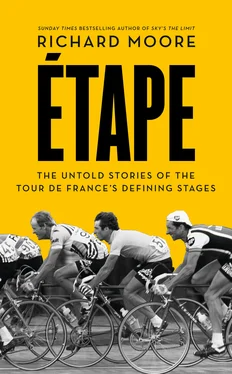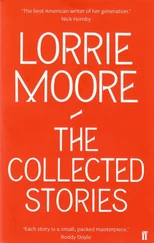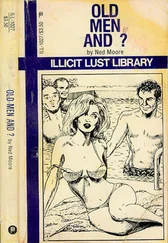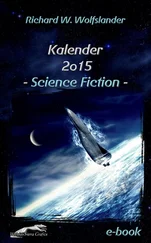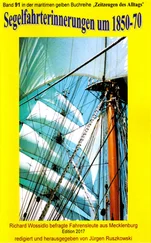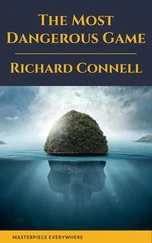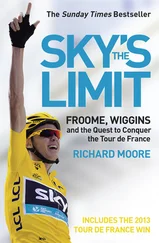But that is not all. Pelier has something else. Art. He is a sculptor, producing in his workshop magnificent wooden objects, from figurative representations of animals to swirling abstract creations. Some of the abstract objects are large but delicate looking; one could represent an athlete, perhaps a cyclist, head tilted back, arms in the air. ‘Even as a rider, I was passionate about art,’ Pelier says. ‘But I really started in the last ten years and I progressed quite fast. I have a feeling for it, and I now have a job that allows me to do it.’
When the 2012 Tour visited Belfort, close to Pelier’s home, the 1989 stage winner paid a visit. He had something for Bernard Hinault: a wooden sculpture, almost like a giant hand, with five prongs, one to represent each of Hinault’s Tour wins.
As for his previous life: ‘I follow cycling from afar, and the Tour always makes me excited, but I don’t feel the need to go to races.’ The only memento in his wood-carving workshop, where he spends so much time and where he says he feels happiest, is a framed picture of his first mentor, The Viscount, Jean de Gribaldy. ‘I have my life now,’ Pelier says, ‘and I give myself one hundred per cent to that. Cycling is behind me.’
Classement
1Joël Pelier, France, BH, 6 hours, 57 minutes, 45 secs
2Eddy Schurer, Holland, TVM, at 1 minute, 34 secs
3Eric Vanderaerden, Belgium, Panasonic, at 1 minute, 36 secs
4Adrie van der Poel, Holland, Domex, same time
5Rudy Dhaenens, Belgium, PDM, s.t.
6Eddy Planckaert, Belgium, ADR, s.t.
2 Two years later, another Frenchman, Thierry Marie, managed an even longer solo breakaway, staying clear for 234km to win stage six in Le Havre. The record, 253km, still belongs to Albert Bourlon, who died a month short of his 97th birthday in October 2013.
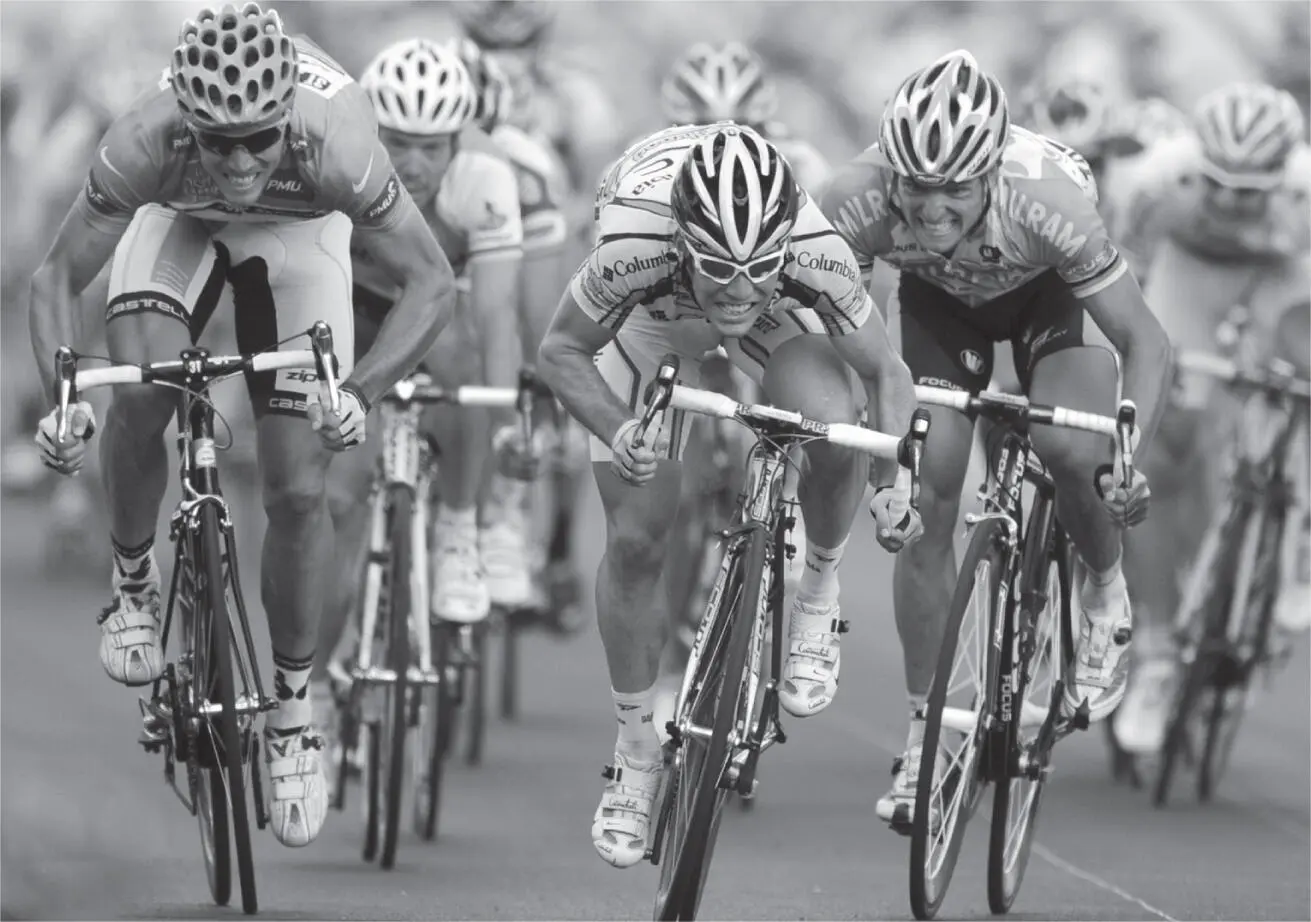
L-R: Thor Hushovd, Mark Cavendish, Gerald Ciolek

24 July 2009. Stage Nineteen: Bourgoin-Jallieu to Aubenas
178km. Undulating
On 20 July, at his hotel in the Swiss Alps, on the second rest day of the 2009 Tour, Mark Cavendish was approached by a rival team manager, Bjarne Riis.
A controversial figure who had admitted to doping when he won the Tour in 1996, Riis was now running the Saxo Bank squad, and one of his riders, Andy Schleck, was still in contention to win the 2009 Tour. As a manager, Riis had earned a reputation as one of the sport’s thinkers and innovators, whose teams were tactically astute and exceptionally well organised. Partly this reputation might have been due to his demeanour: Riis, a Dane, was cold and inscrutable, his aloof manner suggesting he was in possession of a secret code.
But today, Riis had something else on his mind when he walked over to Cavendish’s table as he ate dinner.
‘Have you looked at the profile for stage nineteen, the finish in Aubenas?’ Riis asked.
‘Yeah,’ said Cavendish. ‘Kind of. Looks like a massive climb at the end.’
‘You can get over it. We trained around there. The first half – the first three or four ks – are hard, but if you can get over that, you can settle into it. The last 10km are steady.’
‘Really?’
‘You can go for that one.’
The riders were coming out of the Alps, heading west: the stage was a bridge to the final mountain of the Tour, on the penultimate day: Mont Ventoux. But the stage Riis was talking Cavendish into – stage nineteen, from Bourgoin-Jallieu, in the Rhône-Alpes, into the Ardèche valley, then on to the town of Aubenas – was anything but flat. It was mountainous; the etymological root of the town’s name, ‘Alb-’, means ‘height’. Aubenas sits on a hill overlooking the valley.
It was the kind of stage that Cavendish, the best sprinter of his or perhaps any other generation, would have studied and then probably dismissed. Cavendish and Riis had this in common, if nothing else: both were assiduous in their preparation. Every evening, while some riders were playing computer games or phoning home, Cavendish would study the official road book: the bible of the Tour, detailing every village, every hill, every bend in the road, along with brief tourist-style descriptions of the start and finish towns (‘Aubenas,’ read the entry for stage nineteen, ‘perched on a rocky spur overlooking the Ardèche Valley, with a population of 12,000, benefits from the temperament, the accent and the radiant smile of the south. In the summer, the sunlight illuminates the treasures of the town, captivating the senses of those who visit the city of the Montlaurs …’).
When Cavendish looked at the profile for the stage to Aubenas, it did not look promising. A lumpy first 50km included two category-four climbs, and four peaks in total: up, down, up, down, up, down, up. These so-called ‘transitional’ stages can be the hardest of all. There would be too many riders who would fancy their chances. And it would be their last one, with Ventoux reserved for the overall contenders, and the Champs-Élysées, on the final day, reserved for the sprinters: for Cavendish.
It was the final week; everyone was tired. Nerves were frayed, tempers were short. The day before the stage to Aubenas was a time trial around Lake Annecy, over 40.5km, which Cavendish wanted to treat as another ‘rest’ day. Only, it didn’t quite work out like that. When he heard his time, at half-distance, he realised there was a danger he could finish outside the time limit and be eliminated. He had to ride the second half almost flat out. And he had wasted some seconds – and expended needless nervous energy – when he rode past some British fans on the hill. ‘Cavendish, get up off your arse!’ yelled one. Cavendish briefly stopped pedalling, glared at the spectator, and yelled back his own insult.
It was typical Cavendish. But in the end he comfortably made the time limit in the time trial: 126th, five and a half minutes down on Alberto Contador.
He had already won four stages at the 2009 Tour, the same as in 2008, when he didn’t finish, pulling out with a week to go. Now he was going to finish, at least. But for Cavendish, ‘at least’ was never enough. Still only twenty-four, this feisty, edgy young man from the Isle of Man already had the air and attitude of someone who knew he was capable of something special. He was cocky; he carried himself with the swagger of a boxer rather than a cyclist.
He wasn’t big-headed, he said after explaining that he was the fastest sprinter in the world. It was just a fact. How could telling the truth be construed as arrogance? Never mind that he was speaking in June 2008, before he had won any stages of the Tour. He had a point, and it wasn’t long before he hammered it home. When he sprinted to those four stage wins in 2008, it was an arresting sight. He was unlike any other sprinter. He was Usain Bolt in reverse. Just as the giant Bolt broke the mould among track sprinters, so did Cavendish, a diminutive five foot nine in a field of six-plus monsters. Low-slung, weight forward, elbows bent to about seventy degrees, nose almost touching his handlebars, he resembled a cycle-borne missile. Perhaps only Djamolidine Abdoujaparov, the ‘Tashkent Terror’ of the 1990s, looked so fast. Alongside Cavendish and the equally diminutive Abdoujaparov, other sprinters were bigger, more powerful, and punched a larger hole in the air. Unlike the crash-prone Abdoujaparov, Cavendish could ride his bike in a straight line. In fact, his bike-handling skills were extraordinary, honed by riding on the steep, sloping boards of the velodrome in fast, chaotic madison races.
Читать дальше
